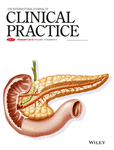Helicobacter pylori infection increases the risk of developing preeclampsia: A meta-analysis of observational studies
Summary
Background
Helicobacter pylori has been previously linked with preeclampsia on the basis of altered angiogenesis and activation of inflammatory cytokines.
Purpose
The purpose of the present systematic review is to summarise current evidence concerning the correlation of the two diseases.
Materials and Methods
We searched the Medline (1966-2017), Scopus (2004-2017), Clinicaltrials.gov (2008-2017) EMBASE (1980-2017), and Cochrane Central Register of Controlled Trials CENTRAL (1999-2017) databases. We selected all observational studies (both prospective and retrospective) that reported the incidence of preeclampsia among women with H. Pylori infection. Statistical meta-analysis was performed with the RevMan 5.3 software.
Results
Fourteen studies were finally included in this review, which included a total number of 9787 women. Nine percentage of these had preeclampsia (879 women). The evaluation of studies with the ROBINS-I tool revealed low to moderate risk of bias. H. pylori IgG seropositivity was significantly more prevalent in preeclamptic than in healthy pregnant women (9391 women, OR: 2.32, 95% CI [1.55, 3.46]). The frequency of anti-CagA antibodies was also higher in pregnancies complicated with preeclampsia (3275 women, OR: 3.97, 95% CI [1.55, 10.19]).
Conclusion
The findings of our study support that H. pylori infection doubles the risk of developing preeclampsia. The exact pathophysiological processes, however, remain poorly investigated and future experimental studies are needed to shed light on the underlying mechanisms.




